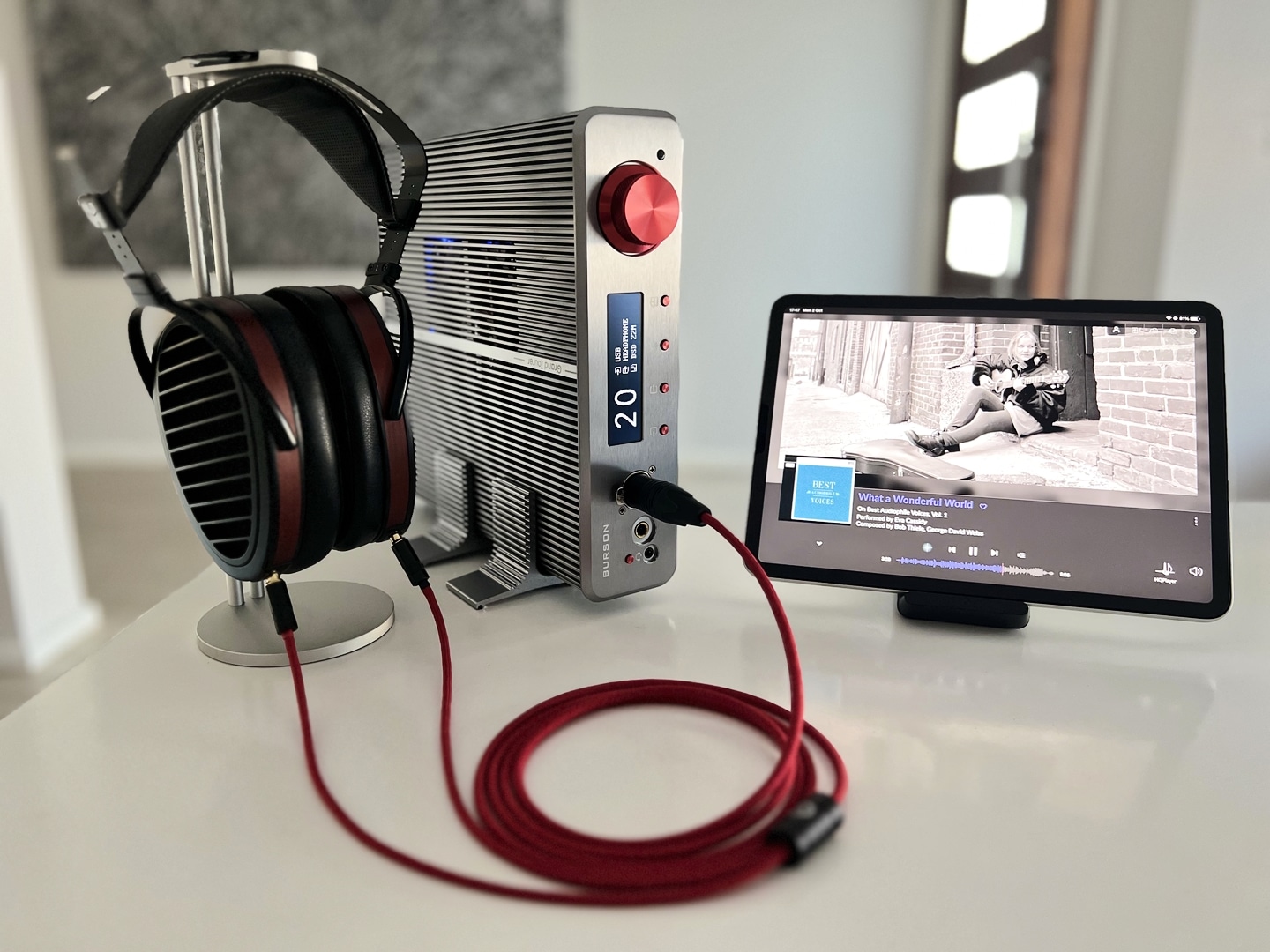I recently got back into Hi-Fi after a 20-year absence (think of the days when Luxman, Rotel, Wharfedale and Tannoy reigned king), beginning my journey to find the ultimate headphone and amplifier combo worthy of occupying the newly acquired prime real estate on my listening desk. After many long nights and three months of searching, I managed to audition an extensive list of amplifiers, including the Topping DX3 Pro+, FIFO K7, HIFIMAN EF600, xDuoo TA-22 DAC, iFi Pro iDSD, and the Burson Conductor 3X Reference amongst many others. I can say with conviction that my journey has finally concluded, and the Burson Conductor 3X GT now proudly occupies my desk alongside a lovely pair of HIFIMAN Arya Organic headphones.
For those of you wondering, at the heart of my digital streaming setup is the incredible Minisforum UM790 Pro 7940HS Mini PC running Linux (Ubuntu Server Minimal Install), a Low Latency Audio Kernel, Roon Server and finally HQ Player Embedded. The UM790 Pro is an audio processing powerhouse sporting an AMD Ryzen™ 9 7940HS Processor (8 Core / 16 Threads @ 5.2GHz), all in a compact little liquid-cooled package which I have tucked away in my server cupboard running headless (no monitor). The reason for all that power is to upscale all my PCM content from Roon to DSD 512 @ 48K via HQPlayer before sending it via ethernet to a Raspberry Pi (running HQPlayer’s Network Audio Adapter OS) tucked away underneath my desk that is also headless. The Burson Conductor 3X GT (powered by the SuperCharger 5A) is then connected to the Raspberry Pi via USB, and the HIFIMAN Arya Organics to the Burson via a custom-made balanced audio cable in “GT Red”, of course. And finally, I use an Apple iPad Pro and the Roon App to access, control, curate and play all my audio.
If you are curious, HQPlayer is a software up-sampler that enables you to further “enhance” or “upscale” your audio before it gets to your amplifier, somewhat like the Chord Hugo M-Scaler but for a lot less money. By pairing HQPlayer with the Burson Conductor 3X GT, I’ve managed to increase the detail, clarity and imaging (how is that even possible?) while widening and deepening the sound stage further than what the Burson Conductor 3X GT already doing an incredible job of doing. Please be aware your mileage may vary with HQPlayer depending on your source, amplifier, headphones, speakers and ears, but it is worth checking out if you are in search of squeezing out that little bit more from your source content.
For those wondering what settings I’m using:
ROON Settings – Sample Rate Conversion Enabled: Output: DSD, Rate: DSD64, Filter: Precise, Linear Phase, Modulator: 7th order (CLANS), SDM Gain: 0dB, Parallelize: Yes, Native Processing: Yes (Note: This pre-upscaling to DSD64 in Roon before sending to HQPlayer is optional but will add an unbelievable sense on realism to live/acoustic recordings when combined with the HQPlayer settings below… “it’s like you’re there”)
HQ Player Settings – Output Mode: SDM, 1x Oversampling: poly-sinc-gauss-hires-lp, Nx Oversampling: poly-sinc-gauss-hires-lp, Modulator: ASDM7ECv3, Bit rate: 2,457,6000 (DSD512@48k), Rate limit: 2,457,6000 (DSD512@48k)
Burson Conductor 3X GT Settings – Gain Level: Low, Filter: Linear Phase Fast (LP FAST)
All in all, the Burson Conductor 3X GT is without a doubt playing the most critical role in my now complete Hi-Fi setup and has well and truly earned its place on my desk. It’s an incredible bit of kit, but paired with the UM790 Pro, Roon, HQPlayer, a Raspberry Pi, an Apple iPad Pro and the HIFMAN Arya Organics, I can honestly say after 20 years of being out of the game, I’m finally in audio heaven again.




